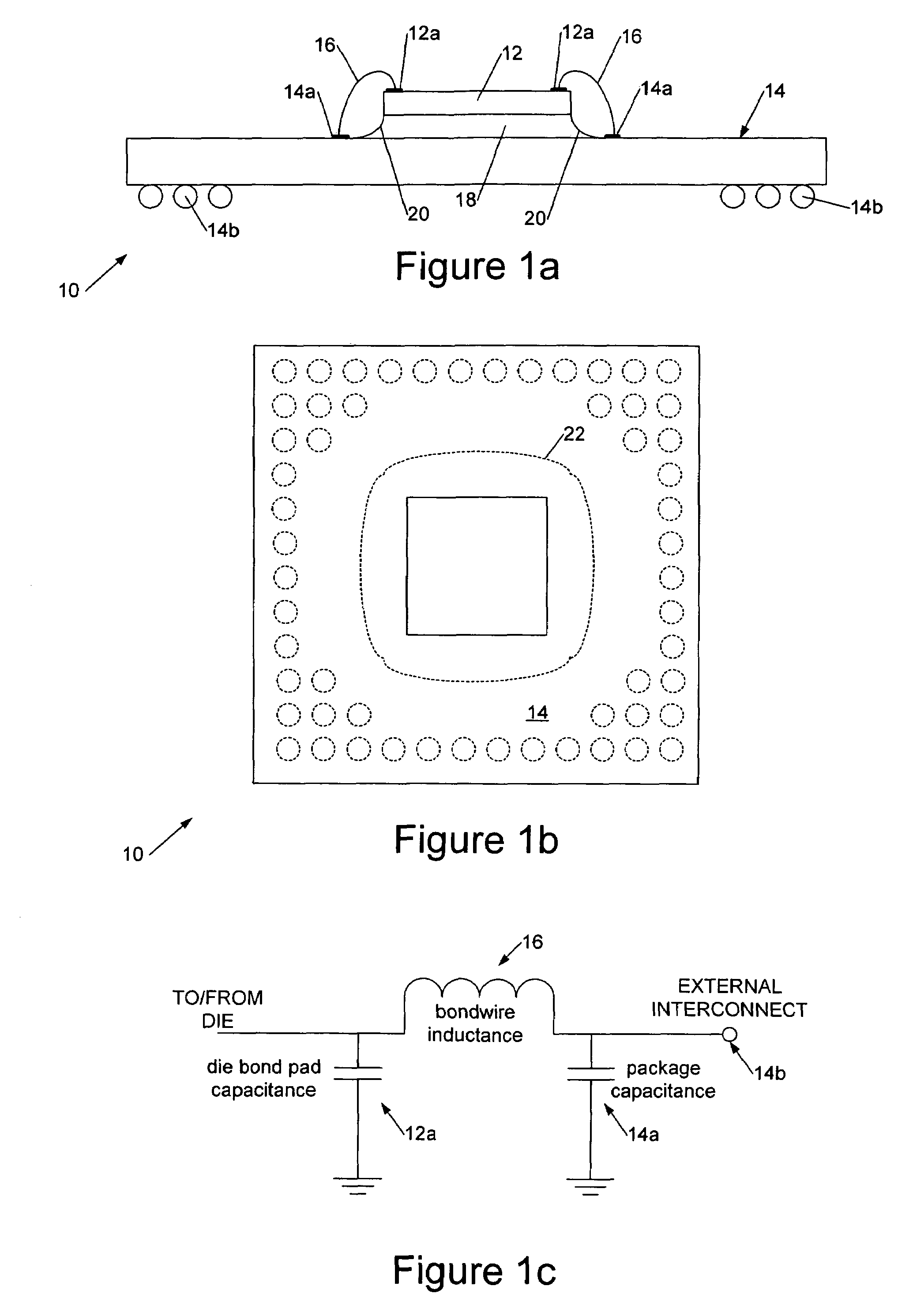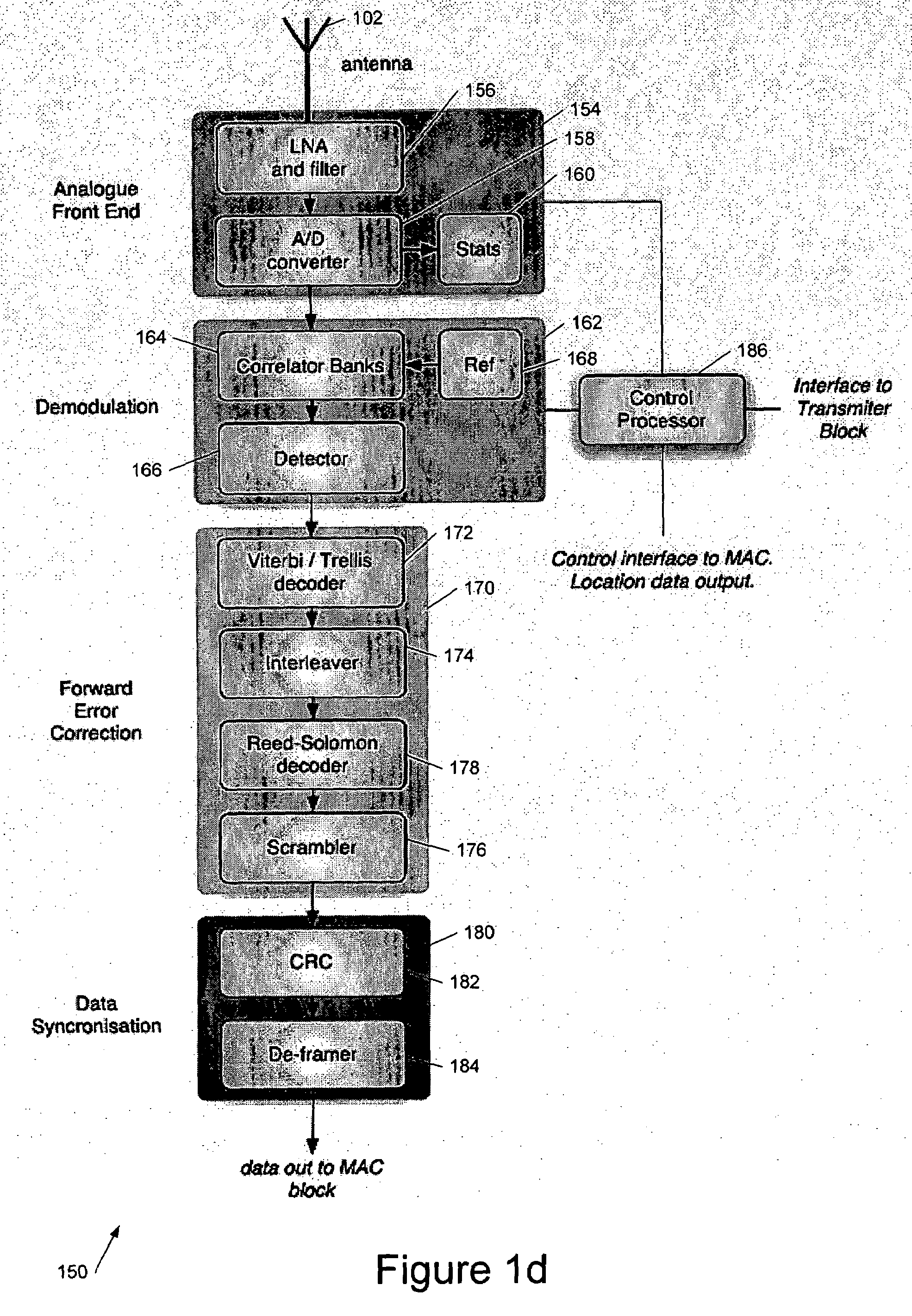Integrated circuit die connection methods and apparatus
a technology of integrated circuit and connection method, which is applied in the direction of electrical apparatus, semiconductor devices, semiconductor/solid-state device details, etc., can solve the problems of undetectable high impedance of bond wire, difficulty in connecting to a die, and difficulty in high-frequency connections, etc., to achieve easy controllable impedance, reduce bond wire length, and low cost
- Summary
- Abstract
- Description
- Claims
- Application Information
AI Technical Summary
Benefits of technology
Problems solved by technology
Method used
Image
Examples
Embodiment Construction
[0028]Some preferred embodiments of the invention are useful for connecting to a die for a single chip mixed signal (analogue rf and digital) monolithic device, in particular for a UWB (ultra wideband) receiver, transmitter or transceiver chip. An example of such a device will therefore be briefly outlined with reference to FIG. 1d, which shows a block diagram of a UWB receiver 150.
[0029]An incoming UWB signal is received by (off-chip) antenna 102 and provided to analog front end block 154 which comprises a low noise amplifier (LNA) and filter 156, and an analogue-to-digital converter 158. A set of counters or registers 160 is also provided to capture and record statistics relating to the received UWB input signal. The analog front end 154 is primarily responsible for converting the received UWB signal into digital form.
[0030]The digitised UWB signal output from front end 154 is provided to a demodulation block 162 comprising a correlator bank 164 and a detector 166. The digitised i...
PUM
 Login to View More
Login to View More Abstract
Description
Claims
Application Information
 Login to View More
Login to View More - R&D
- Intellectual Property
- Life Sciences
- Materials
- Tech Scout
- Unparalleled Data Quality
- Higher Quality Content
- 60% Fewer Hallucinations
Browse by: Latest US Patents, China's latest patents, Technical Efficacy Thesaurus, Application Domain, Technology Topic, Popular Technical Reports.
© 2025 PatSnap. All rights reserved.Legal|Privacy policy|Modern Slavery Act Transparency Statement|Sitemap|About US| Contact US: help@patsnap.com



